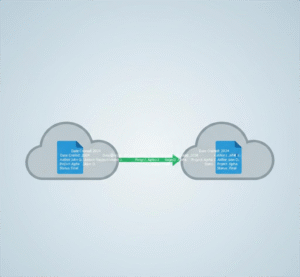Get to know Cloudsfer Backup & Restore Solution
The automated, secure, scalble way to keep your Autodesk Construction Cloud and BIM 360 files safe
We’ve all been there—signing up for a new service and clicking “I Agree” without a second thought. But hidden in those lengthy terms and conditions are crucial details that can significantly impact your organization.
When it comes to cloud services, understanding the small print is essential to maintaining the security and integrity of your data.
Our content team has delved into these details to highlight what you need to know.
Small Print 1: “We reserve the right to delete data that is inactive or not accessed for a specified period.”
What This Means for Your Organization:
You Are Open to Data Loss Risk: If your data is not accessed for a certain period due to accidental oversight, software lapse, or any other reason, it might be permanently deleted by the provider. This clause can be particularly dangerous for archived data that may not be accessed regularly but is still crucial for compliance and historical purposes.
Small Print 2: Data Security Disclaimer: “We operate under a shared responsibility model”
What This Means for Your Organization:
You Must Take Active Steps to Protect Your Data: While cloud providers implement various security measures, the shared responsibility model means that securing data often falls on both the provider and the user. This shared model implies that while the provider ensures the infrastructure’s security, the onus is on you to safeguard your applications and data through encryption, access controls, and regular security audits.
Small Print 3: “We recommend backing up with a third-party”
What This Means for Your Organization:
This “Recommendation” is a Must: Having multiple copies of your data in different locations reduces the risk of data loss. If the cloud provider experiences an outage or data corruption, your third-party backup ensures you still have access to your information. This recommendation is not just a suggestion but a critical strategy to maintain control over your data by managing backup schedules, retention policies, and recovery processes according to your needs.
Small Print 4: “We do not guarantee data recovery in the event of a disaster.”
What This Means for Your Organization:
You Could Permanently Lose Critical Data: The cloud provider does not guarantee complete data recovery in the event of a significant data loss. This means you risk losing your data forever if a disaster occurs, underlining the need for a robust disaster recovery plan that includes regular data backups.
Small Print 5: “We do not provide compensation for data loss.”
What This Means for Your Organization:
Relying Solely on Your Cloud Provider Is Dangerous: When data is lost, there is no guarantee the provider will bear responsibility, leaving you to deal with the consequences. This lack of compensation can lead to significant financial and operational impacts, particularly if the lost data is critical to your business operations.
Transforming Small Prints into Bold Actions
What Should You Do to Take Action?
Review Your Cloud Provider’s Terms: Ensure you understand your responsibilities by thoroughly reviewing your cloud provider’s terms. Look for clauses about data retention, security, backup policies, liability limitations, and data recovery guarantees.
Implement Third-Party Backups: Protect your data with a reliable third-party backup solution. This step is crucial for safeguarding against data loss due to provider errors, service outages, or disasters. Having multiple copies of your data in different locations reduces the risk of data loss significantly.
Summing Up
Grasping the details in the small print and taking proactive steps can greatly boost your data security and prepare your organization for any potential risks tied to cloud services.





